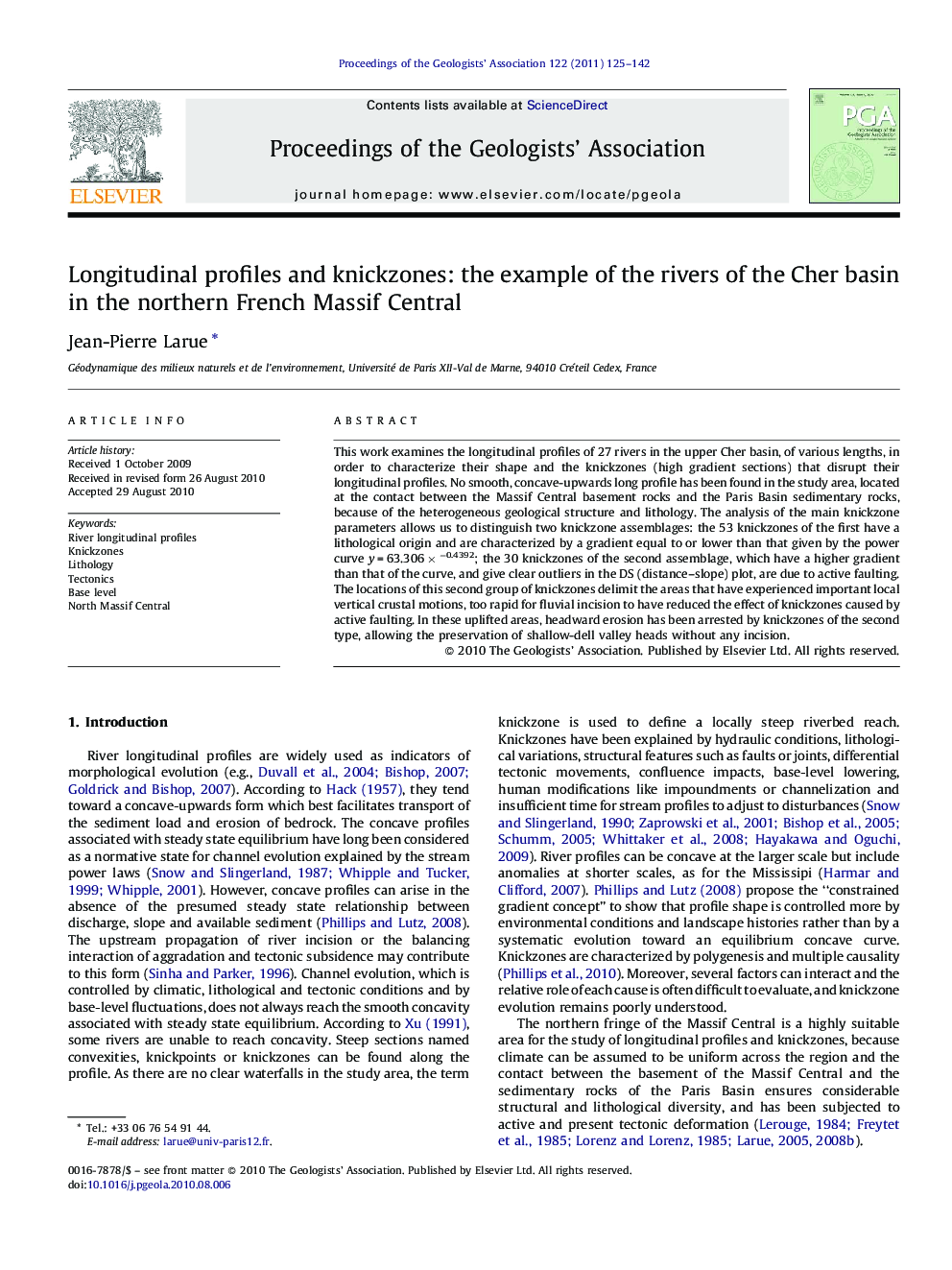| Article ID | Journal | Published Year | Pages | File Type |
|---|---|---|---|---|
| 4734796 | Proceedings of the Geologists' Association | 2011 | 18 Pages |
This work examines the longitudinal profiles of 27 rivers in the upper Cher basin, of various lengths, in order to characterize their shape and the knickzones (high gradient sections) that disrupt their longitudinal profiles. No smooth, concave-upwards long profile has been found in the study area, located at the contact between the Massif Central basement rocks and the Paris Basin sedimentary rocks, because of the heterogeneous geological structure and lithology. The analysis of the main knickzone parameters allows us to distinguish two knickzone assemblages: the 53 knickzones of the first have a lithological origin and are characterized by a gradient equal to or lower than that given by the power curve y = 63.306 × −0.4392; the 30 knickzones of the second assemblage, which have a higher gradient than that of the curve, and give clear outliers in the DS (distance–slope) plot, are due to active faulting. The locations of this second group of knickzones delimit the areas that have experienced important local vertical crustal motions, too rapid for fluvial incision to have reduced the effect of knickzones caused by active faulting. In these uplifted areas, headward erosion has been arrested by knickzones of the second type, allowing the preservation of shallow-dell valley heads without any incision.
